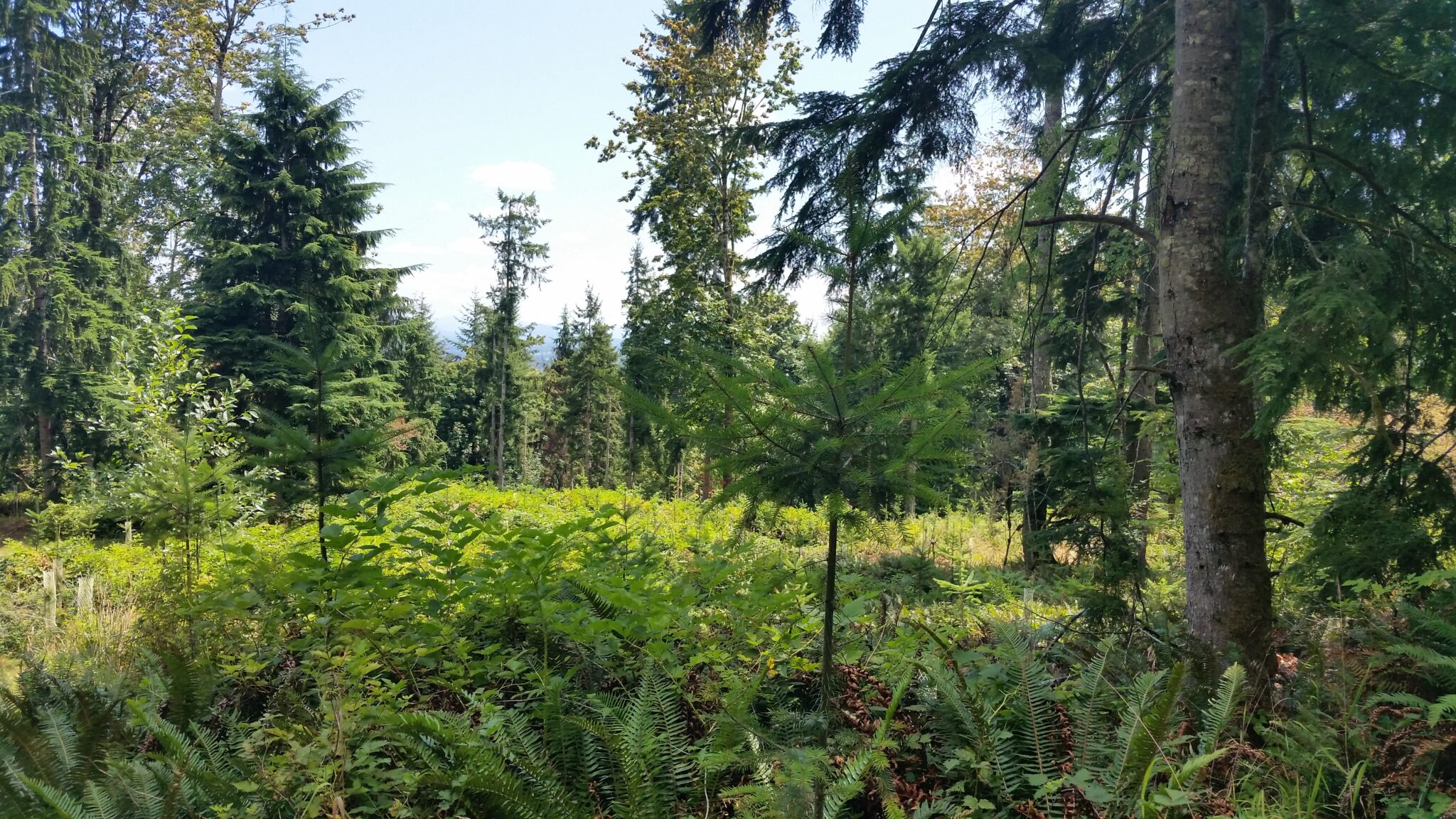Lessons in Root Rot: Turning Challenge into Opportunity

Root rot wasn’t on Paul Butler’s radar when he first began managing his forest near Olympia–but that changed in 2017 when he bought the 40-acre parcel next door.
Almost immediately, Paul noticed some trouble. Two Douglas-firs along the property line, which had previously been healthy, started to decline. He soon discovered that several parts of the new property had areas of dead and dying trees, and began to suspect root rot. When he conducted a harvest in 2019, he focused on these sections of forest. After replanting Douglas-fir seedlings in these same areas, Paul saw the signs again—more sick trees—and realized it was time to try something new.
Paul reached out to the Washington Department of Natural Resources (WDNR), and a forester visited the property to walk the land and offer management recommendations.
Paul now works from a more nuanced understanding of root rot. After working with the forester, he found that some of the commonly repeated advice—like removing all Douglas-fir within 100 feet of infection—was unnecessary in his case. For him, 30–40 feet has been sufficient. He thinks of managing his forest in terms of “three to five less-susceptible trees away” from any known infection point. He also noted that while root rot moves slowly through the soil, it’s relentless. “You have time to think it through,” he said, “but once you realize you have a problem, you should address it, because it’s not going away on its own.” Paul’s goal is to produce a structurally complex forest, so “when some of these trees die and provide woody debris that’s good, but you just don’t want to get out of hand.” He also notes that laminated root rot is naturally occurring, and isn’t an invasive species.
He was surprised to find that managing root rot wasn’t as overwhelming as he feared. “It’s not too complicated to deal with,” he said. “There are some subtleties, sure—but the more time you spend with people who know more than you, the more you’ll learn.”
Paul’s advice to other landowners:
Don’t go it alone. “There’s a lot of info online, but there’s no substitute for walking your land with someone who really knows what they’re looking at,” he said. Paul recommends reaching out to state foresters or NNRG, noting that “there are a lot of types of root rot, and a lot of different issues that can affect your forest.”
Looking ahead, Paul is planning a commercial thinning in another section of forest that has some root rot patches. Some of them have already been replanted with cedar that are doing well. After the harvest, he plans to replant the remaining affected area with a diverse mix of species to improve resilience and reduce the fungus’s spread. When he is done, he hopes to have a more structurally complex forest—one that can handle disturbance and provide valuable habitat.
Paul’s experience is a reminder that root rot, while challenging, can also be an opportunity to step back and embrace a more diverse, resilient forest. This fungus may not often be welcome, but with patience and curiosity, it can become a teacher.
Learn more about Paul’s forest management journey in this 2017 member spotlight video.
If you are interested in learning more about root rot and a variety of management strategies, here are some resources:
- Getting to the Root (Rot) of the Forest – In this NNRG article, we explore a small woodland owner’s journey with laminated root rot and approach to management.
- USDA Forest Service DecAID Advisor: Laminated Root Rot – Part of the USDA’s DecAID tool, this page provides information on laminated root rot and potential management strategies.
- USDA Forest Service: Forest Disease Management Notes– A concise handout offering guidance on identifying and managing laminated root rot in Pacific Northwest forests.
- USDA Forest Service: Root Diseases in Oregon and Washington Conifers – This booklet describes how to recognize key root diseases, how they spread, their impact on host trees, and how to reduce losses through management.
If you are interested in getting advice on your own forest, here are a few places to start:

Leave a Reply